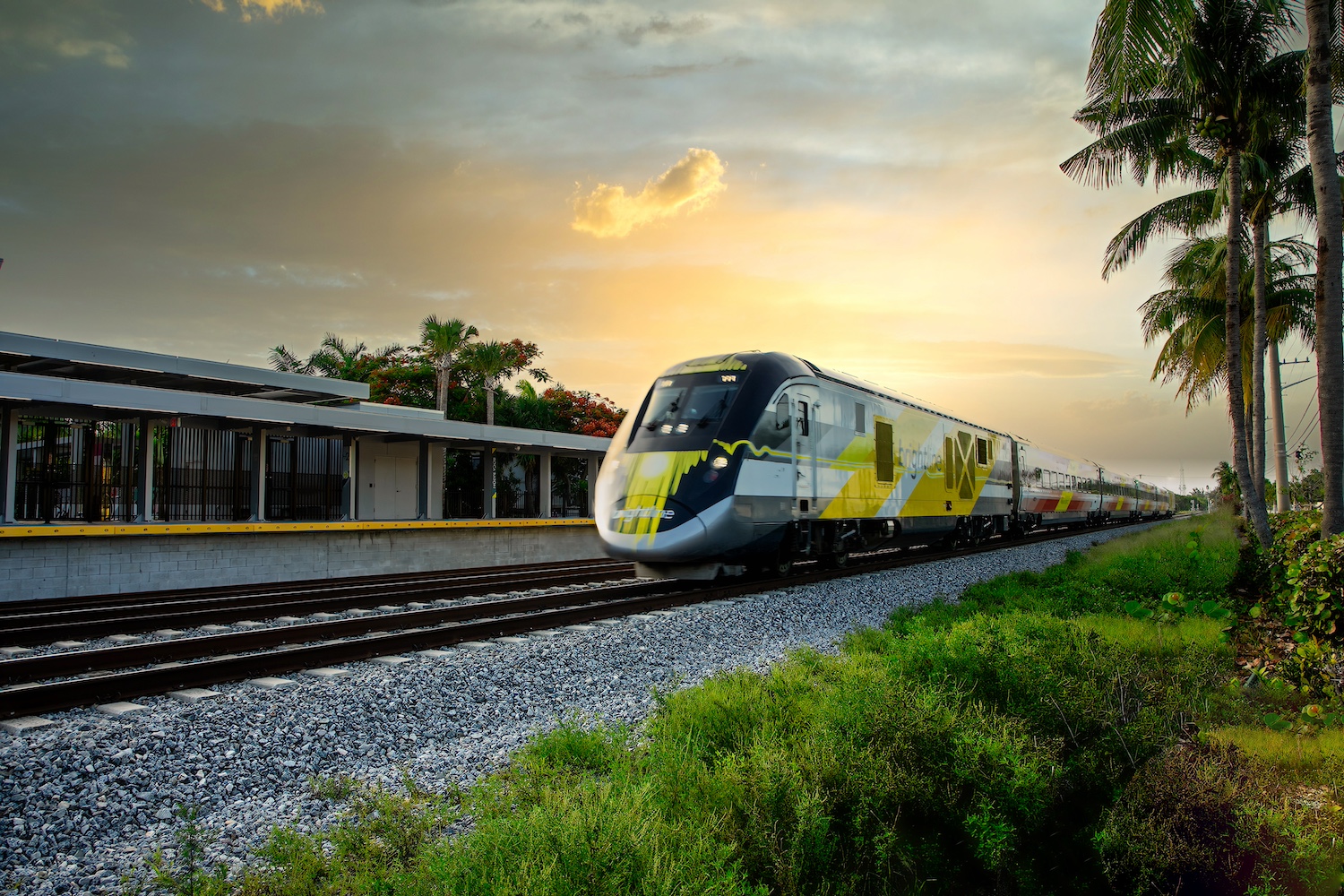
This story on the new train projects to watch is part of The Solutions Effect, a monthly newsletter covering the best of solutions journalism in the sustainability and social impact space. If you aren't already getting this newsletter, you can sign up here.
When you look back at 2018, do you remember it as the year of the electric scooter? I do. Hordes of them appeared on city sidewalks across the country overnight, stirring up a frenzy. That year 38.5 million people rode shared e-scooters, and in 2019 ridership more than doubled to 88.5 million. Public interest in their mysterious appearance led to my brief stint specializing in scooter coverage.
I had a gut feeling that e-scooters were more than a short-term trend. They’re a common sight in many cities today, but they’re still struggling to find their footing in some places due to a slew of safety and regulatory issues.
Regardless of what the future holds for e-scooters, I have that same feeling about recent developments in the rail industry. If 2024 becomes the year of the train, it could benefit the environment and local economies. With that in mind, I’ll have my eye on these three trending train topics via solutions journalism coverage this year.
High-speed passenger trains are connecting major U.S. cities
In 2018, Brightline became the first privately-owned passenger rail line to launch in the U.S. in 100 years. At the end of 2023, it opened one of only two high-speed lines in the country — the other is a popular Amtrak line between Boston and Washington D.C., which tops out at 160 miles per hour after recent upgrades. Soon after, Brightline announced another high-speed project connecting Las Vegas and Southern California that’s set to break ground this year. That project will be all-electric, and the company estimates it will be twice as fast as traveling by car, with top speeds nearing 200 miles per hour.
The high-speed train Brightline already operates takes passengers from Miami to Orlando in just 3.5 hours. Among all of its train routes, the company estimates that it prevents carbon emissions equivalent to removing 3 million cars from the road each year. That’s due to the efficiency of shared transportation, as well as the company’s use of solar energy and biodiesel, a renewable fuel typically made from fats like vegetable oils that produces less emissions. Its high-speed Flordia route uses diesel-electric trains.

Amtrak may also expand its high-speed offerings soon. The federally chartered train operator is exploring a partnership with Texas Central to build a line between Dallas and Houston with an estimated travel time of just 90 minutes. The project won a grant from the U.S. Department of Transportation’s Federal Railroad Administration in December to further develop the plan and budget.
The growth of high-speed rail isn’t all positive, though. The projects are costly and can be slow-moving. The Brightline track from Las Vegas to California, for example, is estimated to cost $12 billion, and the Texas project has been in the works since 2014. The safety of those living near Brightline tracks has also come into question. Due to their high speeds, the company’s trains have the highest pedestrian death rate of any U.S. railroad, the Associated Press reports. Brightline is developing patrol drones, erecting barriers around tracks, and working with suicide prevention groups in hopes of keeping people safe and away from the tracks.
Will Mexico’s Tren Maya project truly benefit the Yucatan’s inland communities?
The first trains to operate on the new Tren Maya rail line shuttled passengers from Cancún to Campeche, Mexico, in late December 2023. The goal is to provide transportation to 34 major locations across five states in the Yucatán Peninsula, including two airports and plenty of popular attractions. But the $28 billion project is still nowhere near finished and the opening rides were riddled with delays, the Associated Press reported last month. The Mexican government aims to have all 947 miles of the rail line operational by the end of February.
Providing a route to inland locations is particularly important because a lack of highways and roads makes many of these areas less accessible than popular coastal towns. Along with improving connectivity, the train project is designed to boost and spread tourism across the region, and in turn, provide economic opportunity for more communities, according to a project statement.
But environmental activists, archaeologists and Indigenous people have criticized the project. They say that in the rush of development, not enough care was taken to prevent damaging the local ecosystem, freshwater sources and archaeological sites. In general, locals’ opinions on the project seem split. Over 80 percent of people polled in the region are optimistic about the economic benefits of Tren Maya, while others highlight issues like not being compensated for land they lost from the project, the BBC reports.
Move over, diesel. Electric freight trains are coming through
In the fall of 2023, we saw the first ever 100 percent battery-powered, heavy-haul locomotive that’s ready to transit goods on main rail lines. The rail tech company Wabtec Corp. spent decades developing it, and recent advances in energy storage technology finally made it a feasible option, Alan Hamilton, the company’s vice president of engineering, told Canary Media.
This doesn’t mean the whole train will be emissions-free, though. Multiple locomotives are typically used to pull one train. For now, Wabtec’s battery-powered locomotive will only replace one of its diesel-powered counterparts in a group. The battery-powered locomotive will work alongside the diesel-powered ones and recharge itself with regenerative braking — a method that uses an electric motor to capture energy from the braking system to recharge the batteries, according to Wabtec.
Still, the swap is expected to produce a double-digit drop in emissions and fuel use per train, according to the company’s estimates. The machine will start hauling iron ore in Western Australia this year.
Wabtec is one of many companies working to reduce emissions from freight trains. The startup Intramotev, for example, turns individual rail cars into all-electric, self-driving versions that can go up to 100 miles on a single charge, Fast Company reports. Mining companies also began using its tech toward the end of 2023.
Images courtesy of Brightline

Taylor’s work spans print, podcasts, photography and radio. She brings her passion for covering social and environmental issues through the lens of solutions journalism to her work as assistant editor.














